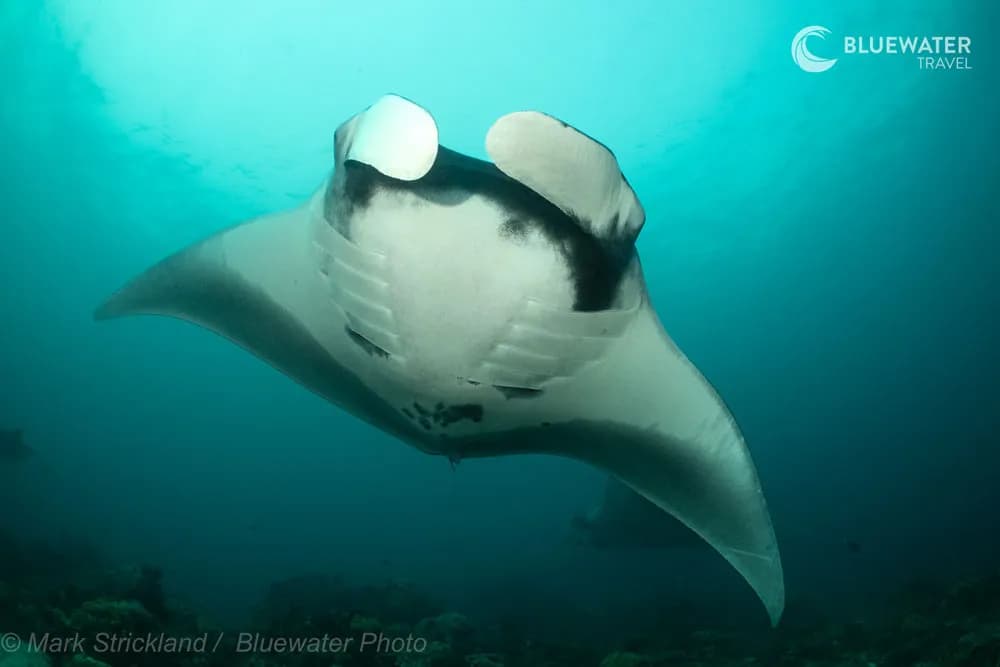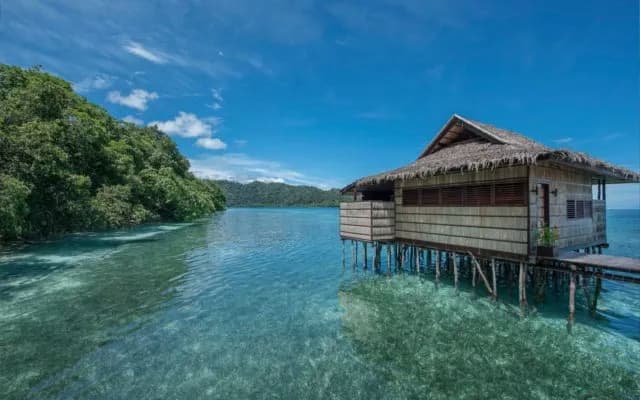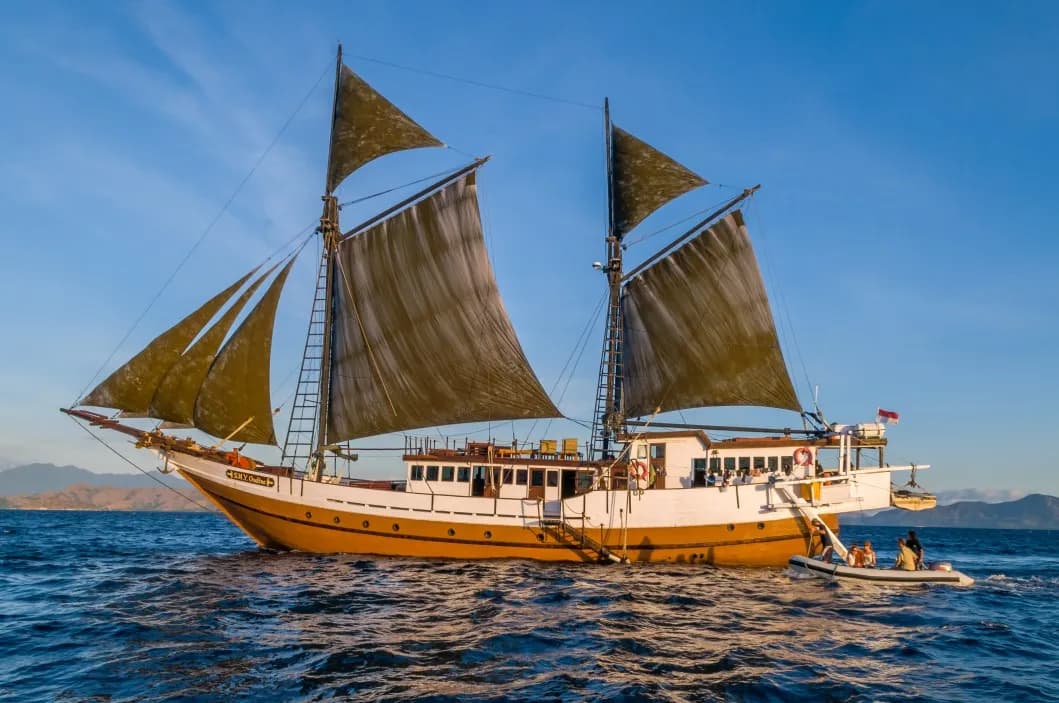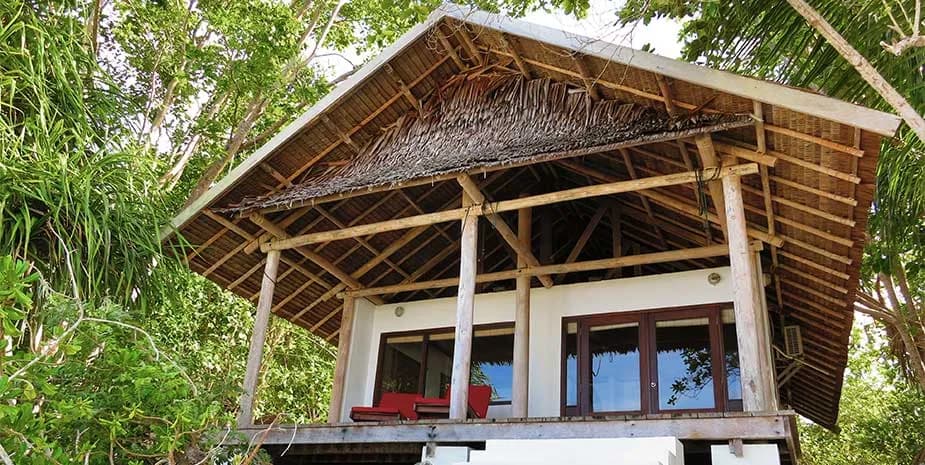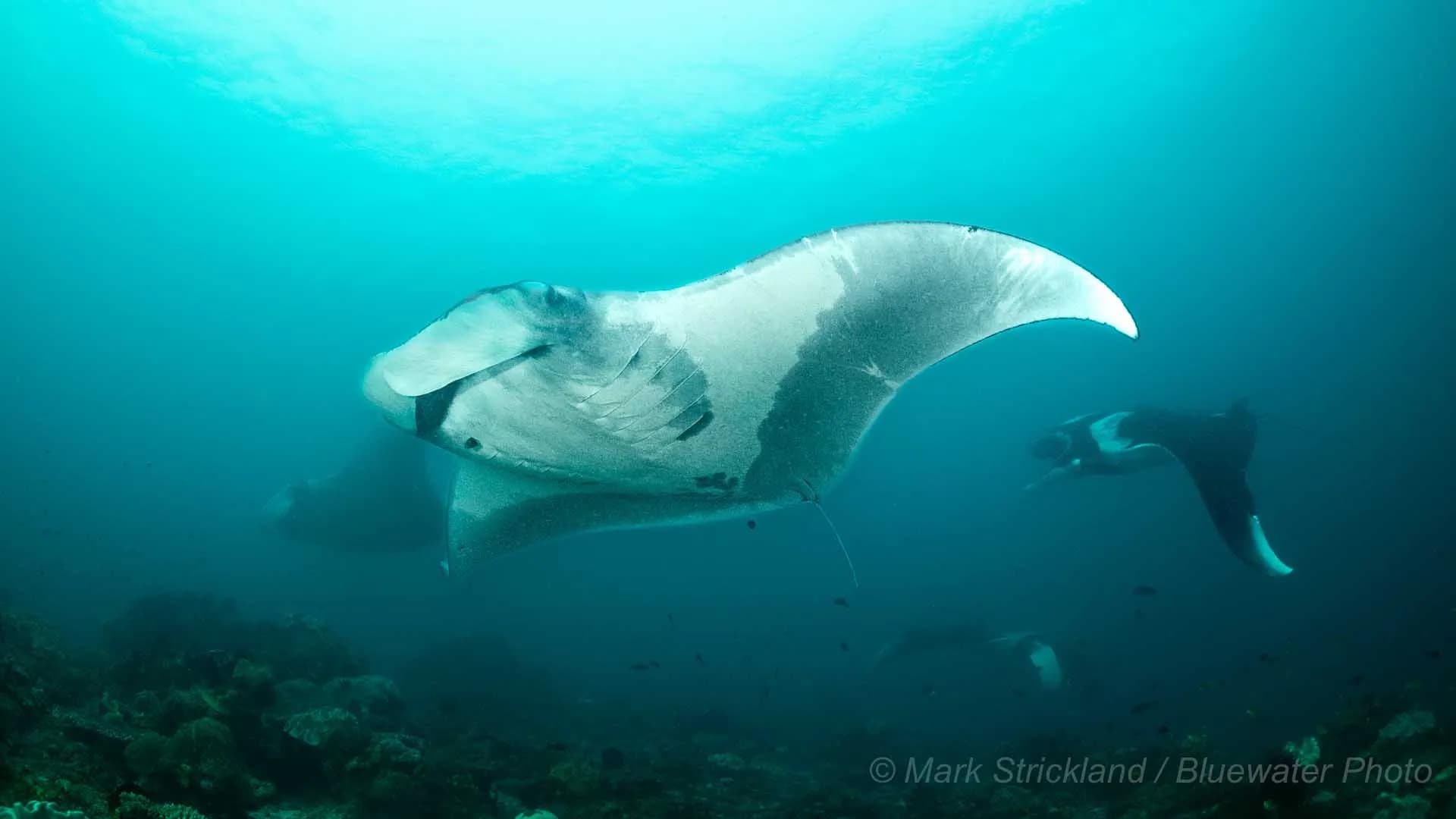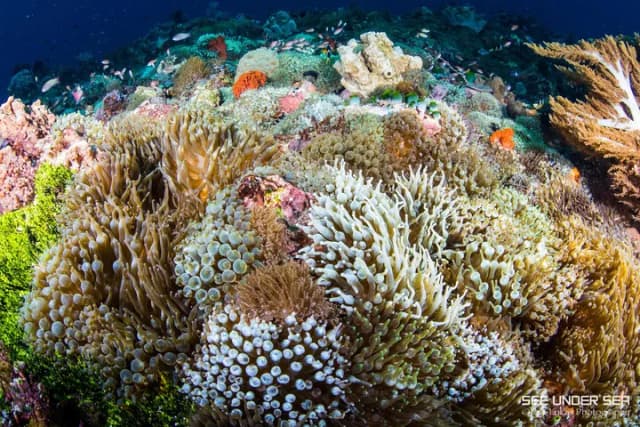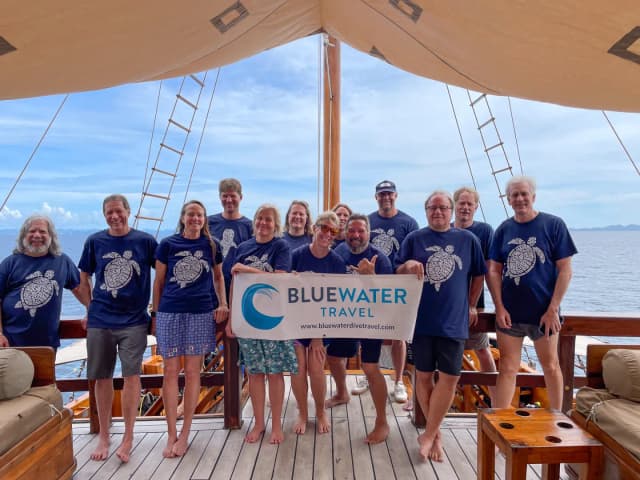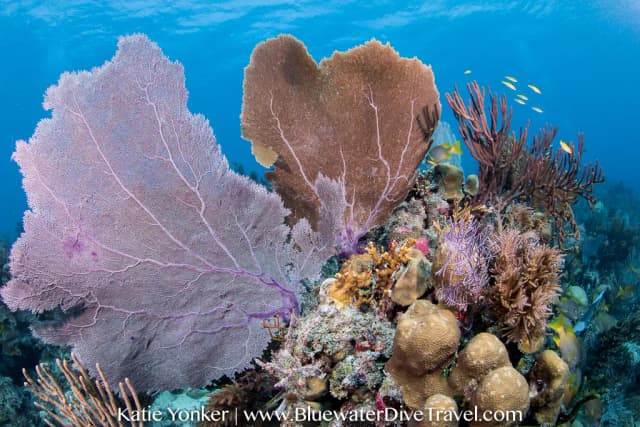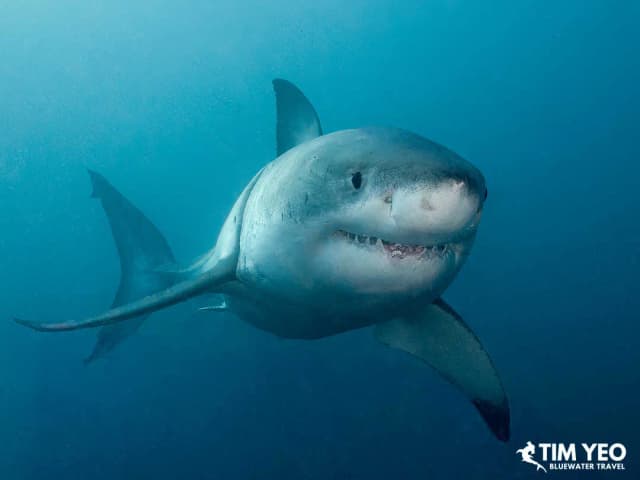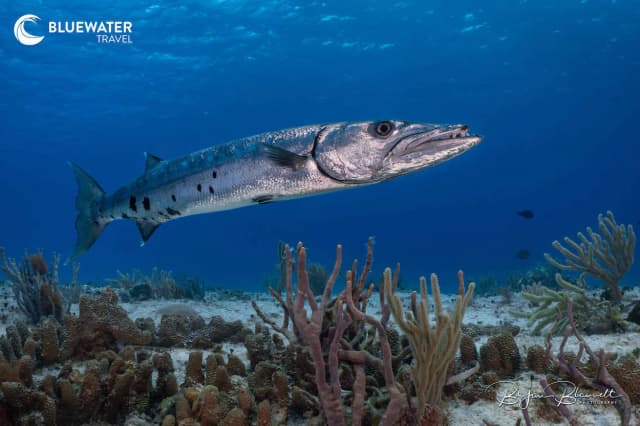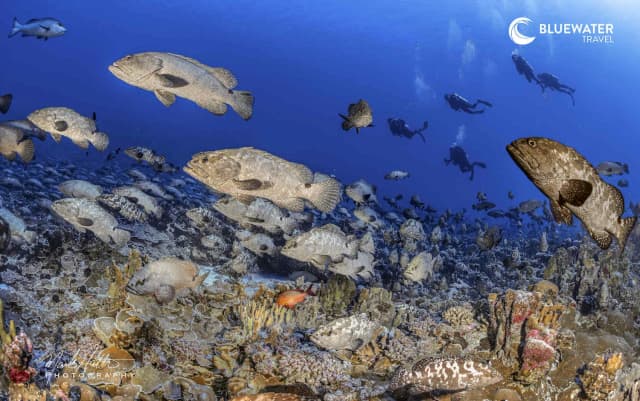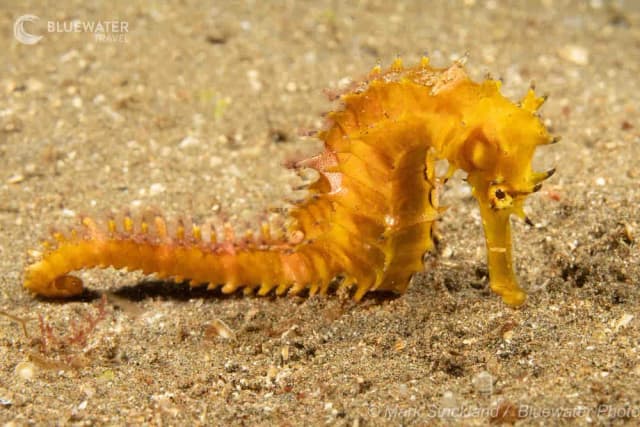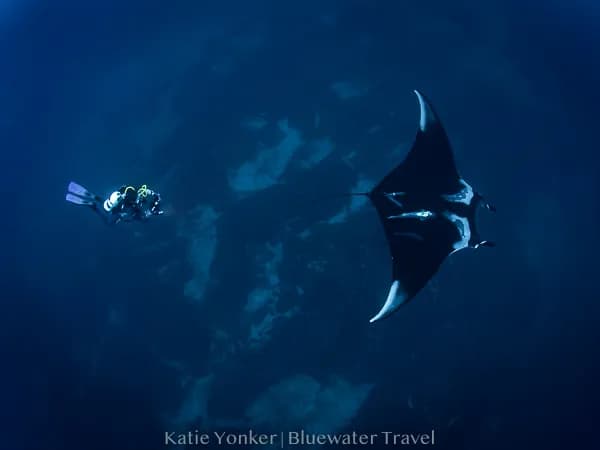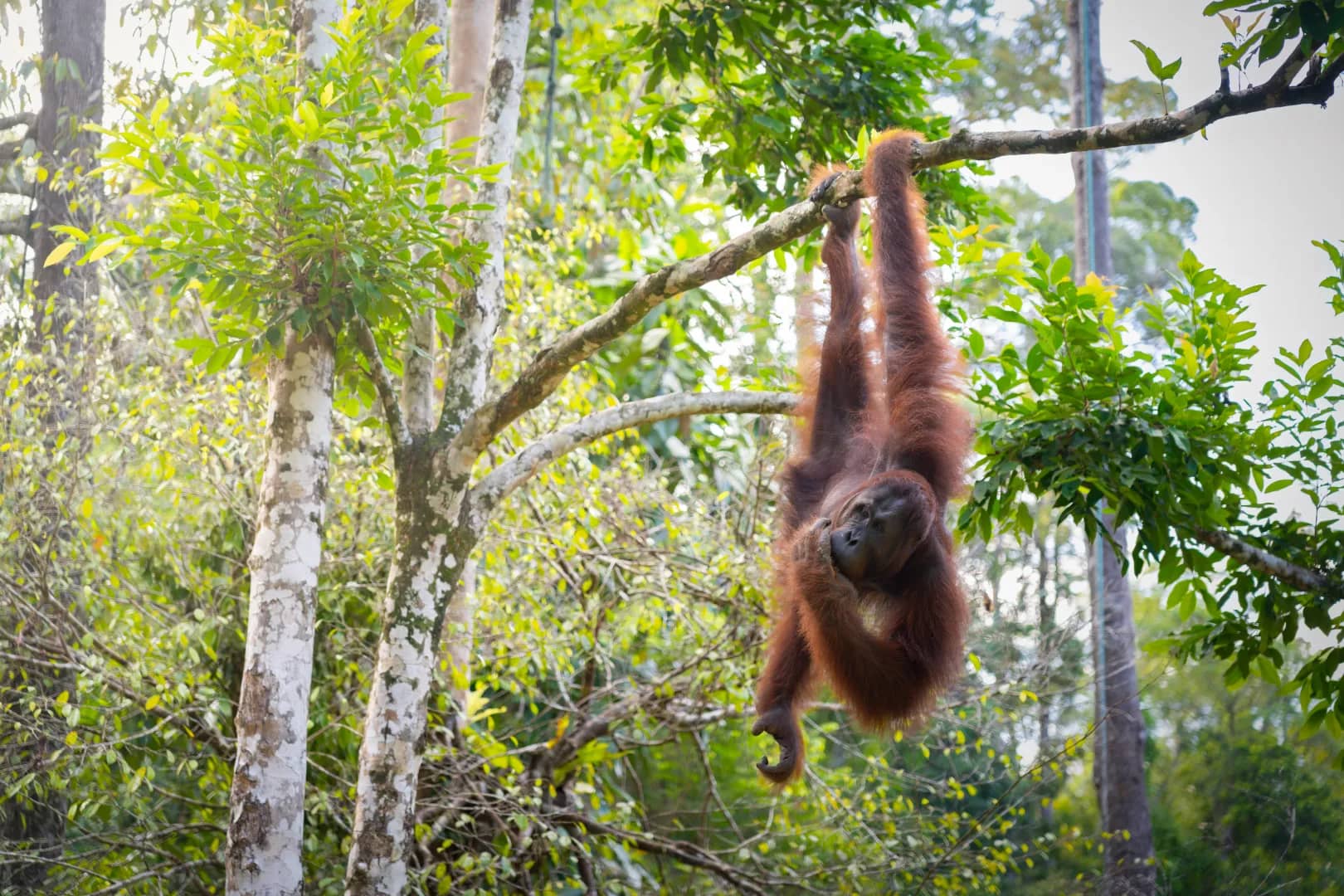Raja Ampat 2025 Trip Report
Bluewater Travel’s Underwater Photography Workshop
“There were SO many fish!” That was a constantly reoccurring comment throughout the wonderful 12 days we recently spent exploring the stunning reefs of Raja Ampat with Bluewater Travels February 2025 Photo Workshop. Located at the eastern end of the vast Indonesian archipelago, this region, which is at the epicenter of the famed “Coral Triangle”, is widely considered to have the world’s greatest marine biodiversity. It also features stunning topside scenery, thriving coral gardens, a huge range of invertebrate life, and unique underwater habitats. It’s also the only place I’ve dived where I’ve never once been cold underwater, as the temperature never dropped below a balmy 85 Fahrenheit!
Welcome to the Coral Triangle
Not including the lengthy flights required to get there, our journey began at the port city of Sorong, located on the western edge of an area known as the Bird’s Head Peninsula on the west end of the massive island of Papua. After a short dinghy ride, we received a warm welcome aboard our floating home for the expedition, the beautifully appointed 130 ft. Damai II Liveaboard. Built in the traditional Phinisi style of the original Spice Island trading ships, this spacious vessel is a treat for the eyes, combining the charm of natural wood with all the modern luxuries and conveniences. Everything about this operation speaks to comfort, relaxation, and convenience, from the huge cabins to dedicated camera room to individual camera rinse tanks at each dive station. And with a crew of eighteen for only twelve guests, they offer a level of customer service that is unparalleled, including careful handling of camera gear, loading and unloading of all dive gear from the tenders, and their embarrassingly helpful insistence of helping every guest in and out of their wetsuits on every dive. In addition to all the practical help, every time we departed or returned in the tenders, the ever-smiling crew broke into animated song, complete with guitar, bongos, and tambourine! Their simple, upbeat tunes were so infectious that before long, we guests couldn’t help but join in.
Kicking Off with Mantas and Macro Delights
Of course it was the diving that we really came for, and that certainly did not disappoint. After picking up five
of our group from a nearby resort, we all got in for a checkout dive on a sloping reef where our guides pointed
out all manner of interesting creatures, with various nudibranchs, flatworms, and a wide variety of fish life
including a robust ghost pipefish. Not bad for a checkout dive! The night dive that evening was equally
productive, where we saw numerous species of shrimp and crabs, all kinds of sleeping fish, several squid, and
an unconcerned octopus on the prowl.
Blue Magic and the Winged Giants
Raja Ampat, which translates into “Four Kings”, comprises four large islands and roughly six hundred smaller
ones, most of which are just south of the equator. The first part of our trip was centred in the northern region,
among the islands and reefs surrounding Dampier Strait. There are dozens of great dive sites in this area, but
we started with one of the most celebrated, a submerged reef called Blue Magic. After a detailed dive briefing,
our group of twelve was split into three separate tender departures, each with their own dive guide. This was
a pattern that stuck throughout the trip, allowing ample space in the tenders and plenty of personal attention
underwater. Descending in a steady current, we were greeted by schooling yellowtail barracudas and
surgeonfish, as a large Napoleon wrasse cruised in the distance, and countless colorful reef fish went about
their business. It was tempting to spend time with these reef dwellers, but our main goal on this dive was to
get a look at the oceanic manta rays that the site is known for. Fortunately, we didn’t have to wait long, and we all
took up positions near the reef top where up to seven of the winged giants swooped in to be serviced by the
resident cleaner wrasses, returning again and again throughout the dive.




The following two dives were also on seamounts with similar-looking terrain at Lau Lau and Sardines, where fish life including blue-spotted stingrays, schooling chevron barracuda, pinnate spadefish and midnight snappers, along with a blacktip reef shark, a swimming giant moray, and a shy and rarely seen species, a cometfish. And, for those focused on smaller attractions, our guides found examples of both Denise’s and Pontohi pygmy seahorses, each of which did a great job of blending in with its surroundings. While a bit of bleaching was evident in certain hard corals and anemones, most of the reef appeared very healthy.
Night Critters and Reef Diversity at Papokreng & Kri
That evening’s night dive took us to a mucky rubble slope at Papokreng, where we encountered several common seahorses, sleeping saddleback anemonefish, snake eels, decorator crabs, Saron shrimp, pygmy cuttlefish and a small frogfish, plus a scary looking Bobbit worm that was sticking up nearly a foot above the silty bottom, jaws agape, waiting for some unsuspecting prey to venture too close.
The next morning found us at Kri Island, site of the first dive resort in the region, at a reef that once held the
record for the greatest variety of fish species ever recorded on a single dive. Descending the steep slope in
good visibility, fish of all kinds soon came into view. Large schools of lobetail snapper and several sweetlips
species hovered over the sandy bottom at base of the slope, holding formation in the gentle current. Layers
upon layers of schooling surgeonfish, fusiliers and giant trevallies swarmed in mid-water. A lone gray reef
shark patrolled the reef’s edge, as a huge variety of angelfish, butterflyfish, rabbitfish, wrasses and other reef
fish appeared throughout the dive. It was easy to see why the record for fish diversity was set here – it was
easier to keep track of the few species we had not seen than the huge variety that we had!


We next moved to a sloping reef in front of Sawandarak Village, where a massive colony of cabbage coral was
home to a big school of yellow snappers and goatfish, as well as a small school of very relaxed ribbon
sweetlips. Several giant tridacna clams dotted the reef slope, but the big attraction was a number of
absolutely unconcerned green turtles with big remoras that allowed us to get as close as we liked.




Sea Turtles, Mangroves & Blackwater Wonders
For the afternoon and evening dives, we moved again to a sloping reef in a narrow mangrove-lined channel called Mangrove Ridge, where we were greeted by a small baleen whale upon arrival! The scuba dive here featured wire coral shrimp and triplefin gobies along with assorted other critters and fish, but for most of us was nothing special. Those who went snorkeling in the mangroves, however, reported stunning hard corals and clear water right up to the mangrove roots, where pajama cardinalfish and archerfish hovered under the overhanging branches. Archerfish have the unusual ability to see well above and below the waterline, allowing them to hunt insects by spitting a forceful stream of water, knocking their prey into the water!




For the night dive, we were given the option to explore a mucky slope, where highlights included a pygmy cuttlefish, several nudibranchs, a toadfish and a Randall’s frogfish. As an alternative, however, several of us embarked on a “blackwater” dive from the anchored boat, which was positioned on the edge of a deep dropoff. As we finned against a gentle current to stay near the lights of the boat, a parade of fascinating creatures passed by, including comb jellies, tiny larval snails, crabs and reef fish, squadrons of small squid, and a tiny larval lobster riding a comb jelly. Cool stuff!
Kawe & Aljui: From Fish Storms to Soft Coral Bliss
The following day took us to the Kawe area under cloudy skies, where we dived two remarkably “fishy” sites,
Black Rock and Eagle Rock. At the former, the water column surrounding two tiny pinnacles was so densely
packed with rainbow runners, yellowmask surgeonfish and fusiliers that it was sometimes difficult to see the
reef! As we neared the bottom, however, the sloping reef revealed itself as a forest of gorgonians and small
sponges, home to pewter and emperor angelfish, scrawled filefish, and a pair of barramundi cod, as well as a
small green turtle. Eagle Rock was another awesome dive, where we descended on the upcurrent side of
three small islets, and immediately found a large, pregnant marble ray. Sizable fan corals were surrounded by
schooling red-tooth triggerfish, as pairs of clown triggerfish, six-band, blue-gridle and emperor angelfish
meandered along the reef slope. In deeper sections, stunning soft corals covered a pair of small pinnacles at
depth, complimented by schooling spadefish and yellowmask surgeonfish. Several bumphead parrotfish in the
shallows kept us company during our safety stop.


.jpg)
.jpg)
As we moved on to the Aljui area in the vicinity of a long-established pearl farm, the sun reappeared, making
our next dive at Tear Drop Corner all the more spectacular. Here, at the base of a limestone cliff, the steep
slope was covered with vibrant red and chartreuse soft corals, complimented by occasional fans and table
corals. Schooling scissortail fusiliers streamed by overhead as a wide variety of reef fish came and went.
Macro life was also abundant, including a spiny lobster, several nudibranchs and a trio of small pipefish. But
the beauty of the soft corals was so overwhelming that most of us paid little attention to anything but the
scenery.
Those who did the night dive found a mostly rubble bottom, and were well rewarded with sightings various
shrimp and crabs, an octopus, a small orange painted frogfish, and an endemic Raja walking (epaulette) shark
Pearl Farming & Shallow Coral Forests
We remained in the same area for all the next day, starting with a tour of the pearl farm, providing a
fascinating look at the process of growing cultured pearls. We then spent the rest of the morning exploring
one of the most special attractions that Raja Ampat has to offer, one of only a handful of places in the world
where clear ocean water meets mangrove forest, providing a rare underwater view of the mangrove
community, which serves as a vital nursery ground for all manner of marine life. Not only is this special habitat
home to a wide range of juvenile fish and invertebrates, it is also a stunning visual spectacle, combining forests
of mangroves bordered by thriving hard corals, healthy seagrass beds, and dazzling soft corals growing on
mangrove roots in full sunlight, only inches below the surface. Many of us couldn’t get enough of this rare
opportunity, and took full advantage of the unlimited dive times that Damai offered for this and most other
locations.
.jpg)
.jpg)
The afternoon offered up another unique and stunningly beautiful site on the opposite side of the same narrow channel, Dalton’s Point. Here, the terrain alternates between a steep drop-off at the base of limestone walls and small, shallow coves populated by dense mangrove forests. There may have been good things to see at depth, but we never made it there, as the scenery was so captivating at 3 to 15 feet that there was no point in going deeper. For most of the dive, we swam beneath a mushroom cap limestone overhang, where a rainbow of brilliant soft corals and gorgonians covered much of the substrate. A similar profusion of soft corals was also growing on the mangrove roots in some areas, especially in the area where we finished the dive – once again, nobody wanted it to end!
After dark, we spent a relaxing 90 minutes exploring the shallows near the pearl farm pier, where our guides found a wealth of cool critters, including Chromodoris and Flabellina nudibranchs, a black and neon blue helmethead slug, numerous lionfish, a toadfish, a tiny pygmy pipehorse, and 2 wobbegong sharks. As with every night dive, the cheerful crew greeted us with mugs of hot chocolate upon our return, along with the usual live musical performance.


.jpg)
.jpg)
Melissa’s Garden & the Reefs of Penemu
Daybreak the next morning found us in the Penemu area, where we started the day by ascending several
flights of wooden stairs to a popular viewpoint that provides a 360 degree vista of the many small limestone
islets that epitomize the topside scenery in Raja Ampat. Then, after a quick round of scenic photos and selfies,
it was time to return to the boat for breakfast while getting underway to one of the region’s iconic dive sites,
an expansive hard coral community known as Melissa’s Garden, named for the daughter of pioneering dive
operator Max Ammer. The glassy surface and sunny skies made it easy to appreciate the exquisite hard corals,
with fields of staghorn and cabbage coral, accompanied by occasional fans and sponges. While it’s too large to
see in one dive, lack of current allowed most divers to see a good portion of this sprawling reef system, from
the deeper slopes to the three small, mushroom-shaped islets in the center. Highlights included various
snappers, lyretail and squaretail coral trout, marble grouper and a small blacktip reef shark. The vertical bases
of the small limestone islets were especially colorful, with clusters of orange cup corals and encrusting sponges
starting at only 15 ft. depth.




The following two dives were both on submerged, coral-covered ridges, the first known as My Reef, which rises
to within 40 feet at its shallowest point, and is covered with a variety of hard corals and gorgonian fans.
Despite the lack of current, fish life was abundant, including schooling fusiliers, unicornfish, blue-lined
barracuda, pinjalo snapper, longnose emperor, and gold-spotted trevallies. Many cleaning stations were open
for business, with handfuls of yellowmask surgeonfish hovering near certain coral heads, waiting to be serviced
by bluestreak cleaner wrasses. Macro shooters were also rewarded, as some fans were home to as many as
nine Bargiabanti pygmy seahorses!
.jpg)
.jpg)


The next site, Swarm, is a large, current-swept reef that reaches within 5 feet of the surface in some places,
sloping to a sandy bottom around 70 ft., and is covered in healthy hard corals, along with large black corals and
leather corals in some areas. As the name implies, this was another very fishy site, as schooling fish of all kinds
milled about in mid-water. A huge variety of reef fish also reside here, including emperor snapper, tall-fin
spadefish, gold-spotted trevallies, yellow-mask, regal, emperor and blue-girdle angelfish and pairs of foxface
rabbitfish, as well as magenta and splendid dottybacks. Critter hunters also had fun, as several species of
nudibranchs and other interesting invertebrates were spotted as we whisked along in a vigorous current.
Dramatic Seascapes in Misool: Puri Puri to Barracuda Rock
After steaming for most of the night, we awoke on the east side of Misool, which is the southernmost of the
four main islands of Racha Ampat. Our morning dives were both in the Yuliet area, at a pair of sites, Puri Puri
and Puri Pinnacle, that are named for the small schooling, anchovy-like fish that are especially abundant here,
and are food for just about every predatory fish in the region. While these small fish were not present in the
numbers that are sometimes seen, there was nonetheless a lot of feeding activity, as gold-spotted and bluefin
trevallies charged through their ranks in mid-water. Reef dwellers were also in good supply, with fish life
including colorful wrasses, reef bannerfish, tailspot blennies, and doublebanded soapfish, along with
invertebrates like spindle cowries, thorny oysters and various nudibranchs. On the following dive at Puri
Pinnacle, highlights included giant, pizza-sized coralimorphs, several very large groupers, a wobbegong under a
coral head, and a brief appearance by a manta!


Nudi Rock Raja Ampat – Dive Site Guide
That afternoon we moved to another iconic site, Nudi Rock. When viewed from the surface, this limestone
islet bears an uncanny resemblance to a nudibranch, complete with small trees growing exactly where the gills
and rhinophores would be located. Below the waterline, there’s an amazing profusion of marine life at every
depth, with forests of black corals and gorgonian fans, punctuated with occasional sponges and hard corals.
Swirling clouds of fusiliers, bannerfish and barracuda filled the water column, as a huge assortment of reef fish
made their rounds, including Napoleon wrasse, semi-circle angelfish, clown triggerfish, and yellow boxfish.
And, while our concentration was mostly focused on the scenery, there were plenty of critters to be found as
well, including the several examples of the dive site’s namesake.
For the night dive, we moved to the Yayil area to a site known as Barracuda Rock, where a steep slope was
home to a variety of cool critters, including a soft coral crab, eggshell shrimp, reef octopus, and a huge Spanish
dancer nudibranch. Fish life included a giant moray, sleeping parrotfish and redtooth triggerfish and another
Raja Ampat epaulette (walking) shark.
Neptune's FanSea, Four Kings, and Funbar
We remained in the Misool region over the next few days, starting at Pulao Tapo, where two small islets are
surrounded by a series of shallow pinnacles, sandy plateaus and sections of vertical wall. Huge, perfect barrel
sponges dot the reefscape, along with occasional fans and massive black coral trees. Lack of current meant
minimal fish activity, but there was a good variety nonetheless, including yellowback fusiliers, bumphead
parrotfish, giant sweetlips, and an epaulet (walking) shark at 7 ft. of depth!


Next was a site in the Pele area known as Kaleidoscope, where a narrow ridge at the tip of a small islet sticks
out into deep water, and is covered with sea fans, red whip corals and elephant ear sponges. Once again lack
of current meant for a sedate vibe, but there was still a good variety of fish, including bumphead parrotfish,
young Napoleon wrasse, orange-lined triggerfish and a pair of six-banded angelfish, as well as several species
of anemonefish and a banded sea snake.
For the afternoon dive we moved to Waaf Island and a site called Funbar, a submerged reef whose walls are
COVERED with colorful tunicates and small orange soft corals. Many interesting and unusual reef fish were
encountered here, including urchin clingfish, blue-spotted and lunar-tail grouper, a strikingly patterned juvenile
emperor angelfish and rarely seen juvenile clown triggerfish and juvenile regal angelfish. Several folks also
encountered a peacock mantis shrimp peering out from its burrow. We returned to the same site for our night
dive, where highlights included the same juvenile clown trigger, a giant moray, a huge starry pufferfish and a
squadron of squid near the surface.


The following day started with a site called Toblerone, where we descended on a wall with occasional fans and moderate fish life. Followed slope up to safety stop depth, where there’s a large swim-through with room for 6 divers to swim through the island and emerge on the opposite side. Cool topography, but overall it was a mediocre dive.
Famous Diving Site of Raja Ampat, Four Kings Misool
We then moved on to the Wayil area to a place that many consider to be the most scenic and colorful of all Raja’s sites, Four Kings. Judging by what we saw there, this reputation is well-deserved – what an awesome site! Consistent with its name, four submerged pinnacles lie in close proximity, the shallowest of which reaches 25 ft. depth, dropping off steeply on all sides. All four peaks are covered with colorful soft corals, fans, crinoids and sponges. Schooling yellow snappers, gold-spotted and bluefin trevallies and longnose emperors filed past throughout the dive, as masked coral groupers and coral trout lurked in the crevices and clouds of anthias and chromis danced above the healthy reef. Everyone agreed that we’d be happy diving this site many times, but the rules dictate that liveaboards in the Misool region do only one dive per site each trip.
Neptune’s FanSea: A Cathedral of Coral Giants
Our afternoon dive was at Neptune’s FanSea, another awesome site! Here, a narrow channel between two islands is often swept by vigorous currents, although it was barely moving for our dive. One area features a long vertical wall with an incredible forest of large, healthy fan corals, while the other, narrower end consists of a sandy channel with numerous coral-covered pinnacles and ledges. Soft corals of many colors and sizes dominated much of the terrain, along with large gorgonians and black corals. As we saw at Four Kings, the fish seemed very used to divers, as normally shy yellow-mask and six-band angelfish, clown triggerfish and scrawled filefish allowed unusually close approaches. A perfect multi-level dive, there was great scenery and fish life at every depth level.The night dive was conducted at Yuliet Kecil on a site called Romeo, where a combination of sloping reef and wall revealed a variety of crabs, shrimp and nudis, plus a pair of blacktip sharks catching and fighting over a fish!
Raja Ampat's Southern Treasure: The Magic Mountain Dive Site
Our last full diving day started out with a bang in the Warakaret area at another justifiably famous site called Magic Mountain. An isolated seamount that was the southernmost point of our trip, this reef rises from deep water to safety-stop depth, making for a perfect multi-level profile. As with most of the dives on this trip, there was a distinct lack of current, resulting in a no-show from the mantas that this site is known for. But aside from that it was an outstanding dive with lively fish action, including schooling fusiliers, red-tooth triggerfish, midnight snappers and schooling bannerfish, adding a welcome flash of color to the mid-water. There were lots of beautiful individual fish too, including square-spot anthias, yellow boxfish, clown triggerfish and regal angelfish, to name just a few. Reef life was also excellent, with sponges and fan corals dominating deeper areas, while prolific soft corals prevailed in the shallows, where huge Dendronepthya trees were complimented by a forest of smaller orange ones covering the sides of many bommies. Just as we were about to end the dive, a small hawksbill turtle swam right up to us, totally ignoring our presence as it chomped on the abundant sponges and soft corals.


Boo Window: Underwater Circus of Raja Ampat
Our next dive was another superstar site, known as Boo Window, which consists of a small islet and tiny “one
tree” rock above the waterline. Below the surface, there is thriving marine life everywhere – schooling
bannerfish, spadefish, barracuda and bigeye trevallies crowd the mid-water, while yellow snappers and clouds
of chromis hover closer to the reef. Seemingly every reef fish in the book paraded past at some point, as well
as a gray reef shark, Napoleon wrasse, hawksbill turtle, and a banded sea snake. Several Notodoris gardineri
nudibranchs were laying eggs at safety stop depth next to the “window” that gives the site its name.
Tank Rock Dive Site: The Macro Paradise of Raja Ampat
Nearby Tank Rock was another fantastic dive. It was raining heavily as we did our backrolls, so it actually felt
warmer once we were in the water. We descending on a terraced wall populated by a thriving community of
fans, sponges and soft corals, complimented by clusters of red whip corals. Most of us were focused on small
creatures, and it wasn’t long before our guides had pointed out several pairs of both Denise’s and Bargiabanti
pygmy seahorses. Several species of nudibranchs were discovered as well as a wide range of small fish,
including Raja, magenta and splendid dottybacks, squarespot anthias, various blennies, gobies and hawkfish,
as well as a pair of juvenile emperor angelfish, and the usual assortment of anemonefish. Before we knew it
an hour had passed and it was time to ascend to safety stop depth, where we were surrounded by one of the
most enthralling scenes I’ve witnessed underwater. We found ourselves at the submerged portion of the tiny,
mushroom-shaped rock that is the site’s namesake, which is completely covered by a living carpet of tiny green
and larger yellow and purple tunicates, clusters of orange cup corals and pink and red soft corals, all open and
feeding in the moderate current. Colorful small reef fish were everywhere, but the star attraction was the
constant parade of gold-spotted and bluefin trevallies that were teamed with dozens of longnose emperors, all
dashing about in pursuit of shimmering waves of glassfish and small fusiliers. The scene cried out for wide
angle, but those of us who were setup with macro were happy just to watch the incredible show going on all
around us.




Apolo Night Dive: Nighttime Surprises
Once the sun set, we headed to a site called Apolo, a beautiful hard coral reef that conveniently tops out at 15
ft. then gently slopes into the depths. Moments after jumping in, we were greeted by a large tawny nurse
shark that acted very surprised to see us and sprinted off into the darkness. Other highlights included several
nudibranchs including a pair of Flabellinas, various shrimp, and a big sleeping pufferfish, as well as a
wobbegong eating a scorpionfish!
Andiamn: Coral, Currents & a Turtle
Our final diving day was in the Daram area, starting at a pair of limestone islets known as Andiamn. The
deeper pinnacles here were very scenic, with several big lionfish hovering near large fans and black corals, as
schooling spadefish and Spanish mackerel passed by in mid-water. Of particular interest was the current-swept
pass between the islets, where prolific soft corals complimented a good variety of reef fish, and a curious
young hawksbill turtle. The most scenic area, however, was at safety stop depth, where small bommies were
covered with orange soft corals, sponges and small fans. Once again, it seemed too good to leave!


Final Dive Magic: Manta Goodbye
Our last dive of the trip was also in the Daram area at a site called Candy Store, consisting of two more small
islets in the same area as Andiamn. It started with dark skies, limited visibility and uninspiring scenery, but the
appearance of waves of schooling bannerfish quickly brightened the mood, along with another super-relaxed
hawksbill that was feeding on a deep ledge. Then, as we were about to head to the surface, a magnificent
manta arrived on the scene, as if to bid us farewell. What a nice way to finish off a trip that was filled with
incredible scenery, a vast variety of marine life, and SO many fish – I think we all hope to return again
sometime soon!


